|
Books Should Be Free Loyal Books Free Public Domain Audiobooks & eBook Downloads |
|
|
Books Should Be Free Loyal Books Free Public Domain Audiobooks & eBook Downloads |
|
Science Fiction |
|---|
|
Book type:
Sort by:
View by:
|
By: Fritz Leiber (1910-1992) | |
|---|---|
 Kreativity for Kats & Other Stories
Kreativity for Kats & Other Stories
Here are three stories by the inimitable Fritz Leiber, all from Galaxy Magazine: Kreativity for Kats 1961 - aliens do live among us; The Last Letter from Galaxy 1958 - a hand written letter paralyzes the postal service; and The Big Engine, 1962 - what makes everything go? perhaps this man is right. All are different and all are very enjoyable. - Summary by Phil chenevert | |
 Green Millennium
Green Millennium
From the classic science-fiction and fantasy author Fritz Leiber comes this intriguing tale of a green cat. From the author's introduction: "The world Phil Gish lived in was not a pretty one, and Phil didn't enjoy living in it. He was disillusioned, purposeless, hopeless, and haunted by the fear that a robot would take over his job. But then Phil was a timid person, not much given to adventure seeking. If he hadn't been so mild he might have found his kicks at All Amusements, the syndicated playground where anyone could find fun, providing he had the proper sadistic and otherwise aberrated elements in his personality... | |
By: G. L. Vandenburg | |
|---|---|
 Four Science Fiction Stories by G.L.Vandenburg
Four Science Fiction Stories by G.L.Vandenburg
G.L.Vandenburg wrote quirky and funny Science Fiction stories for Amazing Science Fiction Stories, and similar magazines in the 1950's. These four are a selection that give a good taste of his offbeat approach, strange sense of humor and relaxed narrative style that brought joy and excitement to those of us who bought these magazines and saw his name on the cover. In the first, Martian V.F.W., some strange visitors join a parade; in the second, Jubilation, U.S.A, our first visitors from outer space... | |
By: Gabriel Tarde (1843-1904) | |
|---|---|
 Underground Man
Underground Man
This post-apocalyptic novella tells the story of the downfall of civilisation and mankind following a solar cataclysm in the late 20th century. To survive, the remnants of humanity had to build a new civilization underground in the complete absence of all species except mankind, choosing to base it only on love and beauty, the fine arts and intellectual pursuits. In view of the sun's current inactivity, this frighteningly prophetic tale might have been written today, saving that the cultural references and the fluid prose might be beyond, if one dares say so, many modern writers... | |
By: Garrett P. Serviss (1851-1929) | |
|---|---|
 The Moon Metal
The Moon Metal
Garrett Putnam Serviss (1851-1929) was an astronomer, popularizer of astronomy, and early science fiction writer. Serviss showed a talent for explaining scientific details in a way that made them clear to the ordinary reader. Serviss’s favorite topic was astronomy, as shown by the fact that of the fifteen books he wrote, eight are devoted to that science. He unquestionably was more widely read by the public on that topic than anyone prior to his time. In his private life Serviss was an enthusiastic mountain climber, describing his reaching the summit of the Matterhorn at the age of 43 as part of an effort “to get as far away from terrestrial gravity as possible... | |
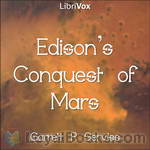 Edison's Conquest of Mars
Edison's Conquest of Mars
Edison’s Conquest of Mars, by Garrett P. Serviss, is one of the many science fiction novels published in the nineteenth century. Although science fiction was not at the time thought of as a distinct literary genre, it was a very popular literary form, with almost every fiction magazine regularly publishing science fiction stories and novels. “Edison’s Conquest of Mars” was published in 1898 as an unauthorized sequel to H. G. Wells’s The War of the Worlds, but did not achieve the fame of its predecessor. The book was endorsed by Thomas Edison, the hero of the book — though not by Wells. | |
By: George A. Whittington | |
|---|---|
 Mists of Mars
Mists of Mars
The Wild West, reimagined as the Martian landscape, where law is defined by whoever has the biggest weapons, be they guns, ships, or things more mysterious. As stand-ins for Indigenous Americans, the Martians themselves. When Barry Williams, special investigator for the Terrestrial Bureau of Martian Affairs, finds out the state of play, he seeks to change the status quo and relieve destruction and suffering. He's going up against the nature of law itself. - Summary by Edmund Bloxam | |
By: George Griffith (1857-1906) | |
|---|---|
 Honeymoon in Space
Honeymoon in Space
| |
 Olga Romanoff
Olga Romanoff
Olga Romanoff is a science fiction novel by the English writer George Griffith, first published as The Syren of the Skies in Pearson's Weekly. The novel continues the tale of a worldwide brotherhood of anarchists fighting the world armed with fantastical airships, ending on an apocalyptic note as a comet smashes into the earth. - Summary by Wikipedia | |
By: Gerald Vance (1916-2013) | |
|---|---|
 Equation of Doom
Equation of Doom
A world weary space pilot on the lam from earth for crimes unspecified; the most beautiful (earthly) tri-D woman in the universe who is determined to be the most powerful too; a planet of crafty and unscrupulous giant frogs intent on kicking out all aliens; and finally beings who live outside of time. Mix them all together and some very interesting things happen. Very interesting. And disastrous. But there's more! Why did 3000 worlds across the galaxy suddenly blossom almost simultaneously with very similar life and intelligence? Could there have been a common ancestor? Well, give or take a million years, simultaneously... | |
 3 Science Fiction Stories by Gerald Vance
3 Science Fiction Stories by Gerald Vance
Three Science Fiction stories by the great Gerald Vance: Monsoons of Death is a very nice blend of horror story and a study of true bravery on the planet Mars. A newly commissioned lieutenant finds out a lot about both! In Larson's Luck, Vance takes us on a light hearted jaun into hot shot space ship pilots, piracy and the good part of breaking the rules. The last story, Vital Ingredient, takes the listener far into the future when the sport of boxing still has two musceled opponents battling it out in a ring, but they are simply puppets, every muscle, feint and jab controlled by ring side 'managers'; ex fighters who have moved up... | |
By: Grant Allen (1848-1899) | |
|---|---|
 The British Barbarians
The British Barbarians
After Civil Servant Philip Christy crosses paths with the mysterious Bertram Ingledew in the respectable suburb of Brackenhurst, Philip and his sister Frida, married to the wealthy Scot Robert Monteith, become friends with the stranger. Bertram has some unconventional concepts about society, and as the story unfolds, his beliefs and actions cause much disruption in the family and the neighbourhood.Who is Bertram? Where does he come from? Allen explores some interesting ideas about society, some of which are curiously relevant today... | |
By: Gregory Casparian (1856-1942) | |
|---|---|
 Anglo-American Alliance: A Serio-Comic Romance and Forecast of the Future
Anglo-American Alliance: A Serio-Comic Romance and Forecast of the Future
Described by io9 as “the first lesbian science fiction novel,” An Anglo-American Alliance is a quasi-farcical tale of love, transformation, and geopolitics set in the far-flung futuristic year of 1960. In it, the titular Anglo-American Alliance has established itself as the world government, ushering in new age of technological and social revolution. However, even in this halcyon period, the “love that dare not speak its name” remains an anathema. The novel’s central narrative follows the long-burgeoning but secret romance between two women at a ladies’ seminary school in Cornwall: Margaret MacDonald and Aurora Cunningham... | |
By: H. Beam Piper (1904-1964) | |
|---|---|
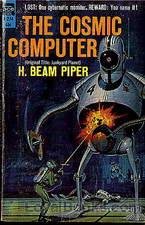 The Cosmic Computer
The Cosmic Computer
Conn Maxwell returns from Terra to his poverty-stricken home planet of Poictesme, “The Junkyard Planet”, with news of the possible location of Merlin, a military super-computer rumored to have been abandoned there after the last war. The inhabitants hope to find Merlin, which they think will be their ticket to wealth and prosperity. But is Merlin real, or just an old rumor? And if they find it will it save them, or tear them apart? | |
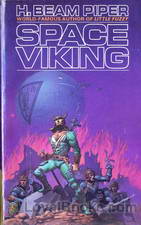 Space Viking
Space Viking
A galactic war has left the Terran Federation in ruins. Formerly civilized planets have decivilized into barbarism. Space Vikings roam the wreckage, plundering and killing for gain. Lord Lucas Trask of Traskon was no admirer of the Space Vikings, but when murder takes his wife on his wedding day, Trask trades everything he has for his own Space Viking ship and sets out on a galaxy-wide quest for revenge. | |
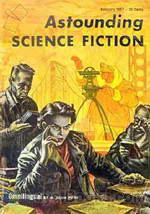 Omnilingual
Omnilingual
An expedition to Mars discovers the remains of an advanced civilization, which died out many thousands of years ago. They recovered books and documents left behind, and are puzzled by their contents. Would the team find their “Rosetta Stone” that would allow them to unlock the Martian language, and learn the secrets of this long-dead race? | |
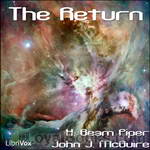 The Return
The Return
Two-hundred years after a global nuclear war, two explorers from a research outpost, that largely survived the cataclysm, discover a settlement of humans who have managed to maintain their civilisation despite ferocious cannibal neighbours, the Scowrers. However, the explorers must turn detective in order to understand the mystery of their hosts philosophy and religion. (Description by Reynard) | |
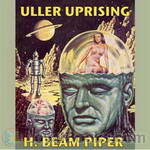 Uller Uprising
Uller Uprising
Uller Uprising is the story of a confrontation between a human overlord and alien servants, with an ironic twist at the end. Like most of Piper’s best work, Uller Uprising is modeled after an actual event in human history; in this case the Sepoy Mutiny (a Bengal uprising in British-held India brought about when rumors were spread to native soldiers that cartridges being issued by the British were coated with animal fat. The rebellion quickly spread throughout India and led to the massacre of the British Colony at Cawnpore.). Piper’s novel is not a mere retelling of the Indian Mutiny, but rather an analysis of an historical event applied to a similar situation in the far future. | |
 Four-Day Planet
Four-Day Planet
Fenris isn't a hell planet, but it's nobody's bargain. With 2,000-hour days and an 8,000-hour year, it alternates blazing heat with killing cold. A planet like that tends to breed a special kind of person: tough enough to stay alive and smart enough to make the best of it. When that kind of person discovers he's being cheated of wealth he's risked his life for, that kind of planet is ripe for revolution. (Introduction from the Gutenberg text) | |
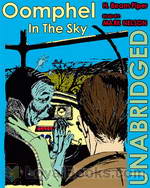 Oomphel in the Sky
Oomphel in the Sky
Natives of the distant planet of Kwannon believe that their world is about to end, and in preparing for the apocalypse, may be unnecessarily bringing about their own demise. The planetary government can’t overcome its own bureaucracy to help them, and the military is overwhelmed. Can a single newsman change the course of a whole people, and save their world? | |
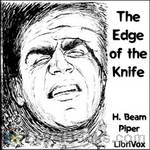 The Edge of the Knife
The Edge of the Knife
The Terro-Human Future History is Piper’s detailed account of the next 6000 years of human history. 1942, the year the first fission reactor was constructed, is defined as the year 1 A.E. (Atomic Era). In 1973, a nuclear war devastates the planet, eventually laying the groundwork for the emergence of a Terran Federation, once humanity goes into space and develops antigravity technology.The story “The Edge of the Knife” (collected in Empire) occurs slightly before the war, and involves a man who sees flashes of the future. It links many key elements of Piper’s series. | |
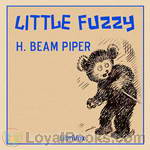 Little Fuzzy
Little Fuzzy
Jack Holloway, a prospector on the planet Zarathustra discovers small furry creatures. These creatures are obviously intelligent, but are they animals or are they sapient? If they are sapient the planet will be declared a protected zone and the company that is developing the planet commercially will lose their exclusive rights to the resources… | |
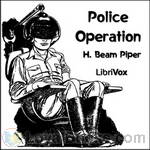 Police Operation
Police Operation
H. Beam Piper (1904–1964) was an American science fiction author. He wrote many short stories and several novels. He is best known for his extensive Terro-Human Future History series of stories and a shorter series of “Paratime” alternate history tales. | |
 Last Enemy
Last Enemy
An undercover Paratimer has disappeared on assignment while in an alternate time line, and it’s up to Verkan Vall of the Paratime Police to save her. To do so, he must infiltrate a universe in which assassination is an honorable profession, and reincarnation a scientific fact. Will Verkan Vall survive in a world of killers and the undead? | |
 A Slave is A Slave
A Slave is A Slave
The Galactic Empire is slowly 'welcoming' into the family of civilized worlds those systems so far off in the backwater of the galaxy that they have been overlooked and ignored for the past 500 years or so. This is purely routine work because every planet offered the chance has eagerly accepted the invitation. Mainly because the enlightened Empire lets the planetary government continue to rule and do whatever it wants...with a few minor restrictions of course; and because the they are shown what happens to planets who decide not to accept the invitation... | |
 Null-ABC
Null-ABC
"There's some reaction these days that holds scientists responsible for war. Take it one step further: What happens if "book-learnin'" is held responsible ...?" | |
 Temple Trouble
Temple Trouble
I'll bet you did not know that our little earth is not limited to the single time line on which we happen to exist. That's right; There are actually thousands, no many millions of parallel times, each existing alongside all the rest, using the same real estate, but following their own path. Some extremely primitive, some very advanced, but all blissfully unaware of the others. Of course this does not affect us at all, unless ... unless one of these time lines discovers the existence of the others and then a way to move easily back and forth from one to the other... | |
 Time Crime
Time Crime
The Paratime Police had a real headache this time! Tracing one man in a population of millions is easy--compared to finding one gang hiding out on one of billions of probability lines! | |
 Naudsonce
Naudsonce
Naudsonce? What does THAT mean? Well, to find out you will need to listen to this story where Piper's unique mind explores what we mean by 'communication' and how it happens. The joint Space Navy-Colonial Office expedition was looking for new planets suitable for colonization; they had been out, now, for four years, which was close to maximum for an exploring expedition. They had entered eleven systems, and made landings on eight planets. Three had been reasonably close to Terra-type but were all disqualified by terrible animals or warlike inhabitants... | |
By: H. Beam Piper and John J. McGuire | |
|---|---|
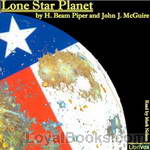 Lone Star Planet
Lone Star Planet
New Texas: its citizens figure that name about says it all. The Solar League ambassador to the Lone Star Planet has the unenviable task of convincing New Texans that a s’Srauff attack is imminent, and dangerous. Unfortunately it’s common knowledge that the s’Srauff are evolved from canine ancestors—and not a Texan alive is about to be scared of a talking dog! But unless he can get them to act, and fast, there won’t be a Texan alive, scared or otherwise! | |
By: H. Beam Piper and John McGuire (1904-1964) | |
|---|---|
 Hunter Patrol
Hunter Patrol
World War IV has dragged on for 12 years and the whole world is drained and tired of the killing and destruction. One man, a high school chemistry teacher from St. Louis in the USA, is serving his latest forced stint in the UN forces when something strange happens to him. He dies but yet he doesn't. What if you had the power to bring peace to the entire world? What would you do? This story explores a frightening and strange journey into the murky depths of human needs and desires and how they can twist and turn back upon us. | |
By: H. G. Wells (1866-1946) | |
|---|---|
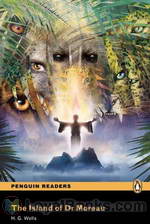 The Island of Dr. Moreau
The Island of Dr. Moreau
One of the first instances of science fiction, Wells’ classic tale published in 1986 examines various controversial philosophical issues active at the time of its publication, most notable being the implications of vivisection and degeneration. Narrated by its everyman protagonist Edward Prendick, the novel follows the events of his stay at a mysterious island, home to ghastly secrets, horrors, and incomprehensible experiences. Furthermore, the novel features innovative themes which have become iconic in the modern science fiction genre, including moral and ethical responsibility, evolution, and man’s interference with the course of nature... | |